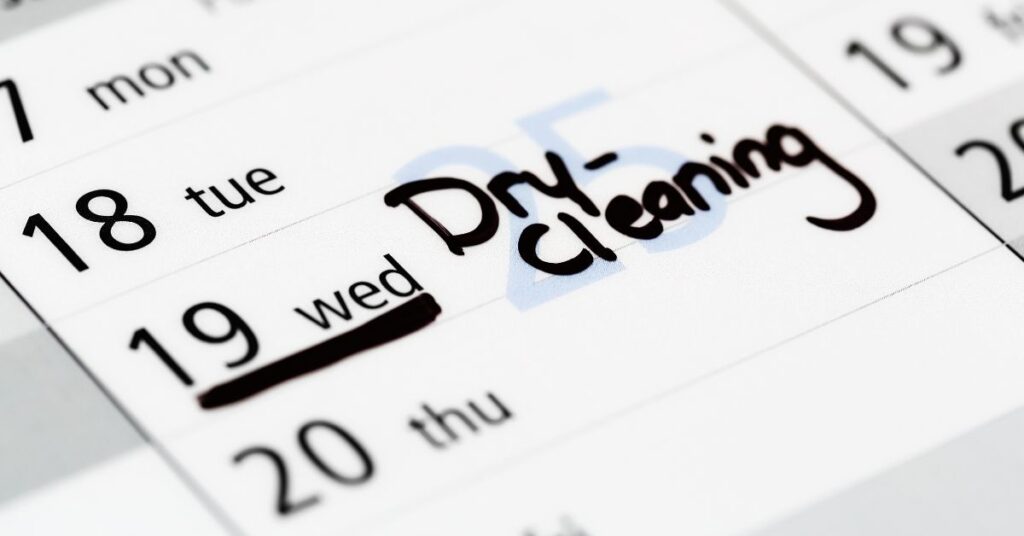Dry cleaning kills mold on fabrics, but it doesn’t prevent regrowth, necessitating proactive measures and professional help in severe cases.
Does Dry Cleaning Kill Mold? Your Comprehensive Guide to Mold Eradication
Mold can be an unsightly, not to mention hazardous, visitor in our homes. If not tackled promptly, it can lead to serious health issues. But how to tackle it? You’ve probably come across countless methods of mold eradication. But here’s an often-overlooked strategy: dry cleaning. Let me enlighten you on this mystery and answer your burning question: “Does dry cleaning kill mold?” Buckle up, because we’re going to deep dive into the world of mold removal.
The Magic of Dry Cleaning
What exactly is dry cleaning? Contrary to its name, dry cleaning isn’t entirely dry. Rather, it employs solvents instead of water to cleanse dirt and stains from fabrics. This technique is often the chosen hero for cleaning delicate or sensitive textiles that might succumb to the intensity of a regular washing machine.
Does Dry Cleaning Kill Mold: An Investigation
So, does dry cleaning kill mold? If you’re expecting a simple yes or no answer, I’m afraid I’ll have to disappoint you. Here’s the deal: dry cleaning can, indeed, kill mold. The solvents used in the process can effectively slay mold spores and remove mold from fabrics. However, before you rush off to your local dry cleaner, bear in mind that not all molds bow down to the power of dry cleaning. Some molds are tougher customers, needing more stringent methods, like HEPA vacuuming or steam cleaning, to get rid of them.
It’s also worth considering that while dry cleaning can play a part in defeating mold, it can’t do anything about stopping it from coming back. Mold loves damp, humid areas, so unless you fix the underlying problem causing the dampness, mold will return. It’s a bit like trying to bail out a boat with a hole in it. Until you plug the leak—whether that’s fixing leaky pipes or enhancing ventilation in your home—you’re just treating the symptom, not the cause.
Choosing Your Dry Cleaning Champions
All dry cleaners aren’t equal in their mold-battling prowess. When choosing a dry cleaner, opt for one that specializes in mold removal. Look for those that use environmentally friendly solvents, to minimize their environmental footprint and avoid leaving toxic residues on your textiles.
When to Call in the Experts
If you’re dealing with a mold infestation that makes your home look like it’s auditioning for a horror movie, it’s time to call in the pros. Professional mold removal services have the know-how and gear to eradicate mold thoroughly and prevent it from recurring. They can also help identify why mold chose to set up shop in your home in the first place, guiding you in taking steps to stop it from happening again.
Proactive Measures for a Mold-Free Home
If you want to avoid seeing mold again, it’s essential to take proactive measures. Here are six crucial steps you should follow:
- Humidity Management: Keep the humidity levels in your home below 60%. You can achieve this by using dehumidifiers and air conditioners.
- Leak Repair: If there are any leaks in your house, fix them promptly. This includes leaks in pipes and around windows and doors.
- Proper Ventilation: Maintain good ventilation in damp areas like bathrooms and kitchens. An exhaust fan can be a good investment.
- Regular Cleaning: Clean your home regularly. A clean home gives less room for mold to grow.
- Sunlight: Let in as much natural light as you can. Sunlight helps to keep your home dry and is a natural mold deterrent.
- Dry Wet Areas: Never leave wet areas in your home. Dry them as soon as possible to prevent mold growth.
In conclusion, when you ask “does dry cleaning kill mold?” the answer is yes, but with caveats. Dry cleaning can be a useful ally in removing mold from fabrics. But remember, not all molds surrender to dry cleaning, and it doesn’t address the cause of the mold invasion. You need a well-rounded strategy, including professional mold removal services and preventive measures, to keep your home mold-free. Remember, knowledge is power, and taking action is your superpower to ensure your family’s health and a mold-free home.
FAQs
❖ Can I use any dry cleaner for mold removal?
Not necessarily. It’s best to use a dry cleaner that specializes in mold removal. They will have the right solvents and methods to effectively tackle the mold problem. Also, consider a cleaner who uses environmentally friendly solvents to avoid toxic residues.
❖ Is dry cleaning a preventive measure against mold growth?
No, dry cleaning isn’t a preventive measure against mold growth. While it can kill existing mold on fabrics, it does nothing to address the root cause of the mold issue. Preventing mold growth requires tackling dampness and humidity in your home.
❖ What should I do if I find mold on my clothes?
Firstly, don’t panic. Take the clothing outside to avoid spreading the spores inside your home. Brush off the mold, then take the clothing to a dry cleaner who specializes in mold removal. It’s also important to identify and resolve the cause of mold growth to prevent future occurrences.
❖ Can I kill mold with regular washing?
Regular washing can remove visible mold and reduce the number of spores, but it may not fully eliminate them. Plus, washing in warm water can actually help some types of mold to grow. Dry cleaning or using a specialized mold-killing product is usually more effective.
❖ Is all mold dangerous?
Not all mold is harmful, but some types can cause health issues, especially in people with allergies or asthma. Regardless of the type, it’s always a good idea to remove mold as soon as possible to maintain a healthy living environment.
